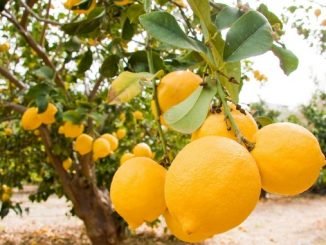
Two of humankind’s most concerning issues – the climate crisis and not maintaining better health – can partly be tackled by one solid arrangement: eating more food from trees, explicitly tropical ones.
While worldwide patterns in agribusiness and diets are not handily turned around, researchers express that making progress to develop and eat more mangos, avocados and Brazil nuts – and many tree-sourced nourishments most people have never heard of – can be both achievable and supportable.
Writing in People and Nature, researchers outlined the myriad nutritional, economic and environmental-health potential of increasing the production and consumption of tropical fruits. They present an overview of benefits from tree-sourced nourishments as far as sustenance and examine the boundaries and dangers of scaling up gracefully to a worldwide level.
“Planting the right type of trees in the right place can provide nutritious foods to improve diets sustainably while providing other valuable ecosystem services such as carbon sequestration,” said Merel Jansen, the lead author from ETH Zurich and the Center of International Forestry Research.
“It also can contribute to development issues related to poverty reduction, biodiversity conservation and food security,” added Jansen.
Regardless of the variety of consumable plants – there are more than 7,000 – the worldwide food system is established on uncommonly low diversity. Almost half the calories consumed by humans come from only four crops: wheat, rice, sugarcane and maize.
The overconsumption of these energy-rich but nutrient-poor foods – in blend with underconsumption of more nutritious food sources – has contributed altogether to ailing health, which torments somewhere in the range of two billion individuals. Besides, their development has caused far reaching misfortunes of biodiversity and added to environmental change.
Therefore, specialists are requiring a change of worldwide food systems characterized by the cultivation and utilization of nourishments that at the same time convey dietary, natural and medical advantages. Since tropical tree species, which may surpass 50,000, have this potential they can be a basic piece of the arrangement, state the creators.
“Leveraging the diversity and local knowledge of tree species in tropical landscapes offers an excellent nature-based solution to match the rising global demand for diversified, healthy and sustainable diets, and to re-valuate native tree species and local farming practices,” said Chris Kettle, the principal investigator of this work, from the ETH Zurich and Alliance of Bioversity International and CIAT.
The world’s hundreds of millions of smallholder farmers, who have been regularly pushed aside by the industrialization of food systems, can possibly be central participants in food system change. With the correct motivations, investments and contribution, smallholder farms could scale up agroforestry systems to create more, healthy food, while at the same time expanding their pay sources.
Marginalized groups and women also stand to gain from tree-sourced food sources, especially when the foods are harvested from trees that are not planted but grow spontaneously or and have the potential for natural regeneration that can be managed. This is because, in part, women farmers tend to have limited access to land, credit and other assets.
Maintain yourself for better health
There are many clear opportunities to incorporate food-producing trees into landscapes. The majority of global cropland does not incorporate trees but has a high potential for doing so. Further, vast tracts of land in the tropics have been cleared for agriculture and then abandoned, and coordinated restoration efforts could include the establishment of sustainably managed agroforestry systems.
How to avoid pitfalls
Increased demand for tree-sourced products has potential downsides. The establishment of industrial cacao plantations in West Africa and oil palm plantations in south-east Asia have deforested landscapes, degraded soils, harmed biodiversity and increased carbon emissions. Avocado farms in Mexico, made profitable by increased demand north of the border, have been recently targeted by organized crime. Dependency on single products can lead to widespread shocks when prices crashed, as has happened to cacao farmers in Cote d’Ivoire.

“A combination of interventions by states, markets and civil society across the supply chain – from producers to consumers – is necessary to guarantee that increases in demand are supplied from sustainable production systems that are diverse, and that will not lead to large-scale deforestation or other unwanted side effects,” said Jansen.
To make increased tree-sourced food production an integral part of the global food system transformation, the authors propose the following:
Consumer demand: More information needs to reach consumers about tree-source food.

“To radically change diets, extensive behavioral change campaigns will likely be necessary, especially to increase the consumption of underutilized nutritious and healthy foods,” the authors say.
Land tenure: One barrier to the implementation of tree-based food production systems is insecure land tenure rights. These are particularly important since tree-crops can require substantial up-front expenses and return on investment can take years. Secure land rights are considered key to overcoming these barriers.
Investment costs and pay-back time: Intercropping with annual crops, payment for ecosystem services, redirecting annual crop subsidies, and provision of micro-credits to establish agroforestry systems can create funding opportunities. These can help alleviate high investment costs and long pay-back times.
Supply chain development: Developing supply chains for potentially popular products is essential for rural communities to access markets. NGOs, private investors, and the public sector can all contribute.
Genetic resource conservation: Investment in the conservation of genetic resources that underpin diversity is necessary for crop tree systems to flourish. Additionally, reliable seed sources and seedlings need to be available for the establishment of tree crop farms.
Technological development: Development of propagation methods, planting techniques and post-harvest technologies for currently undomesticated trees can help to better use the enormous diversity of trees in our food systems.

Diversification: To avoid the pitfalls of monoculture systems including price shocks and environmental degradation, sustainable crop tree systems must include a variety of plants and crops.

